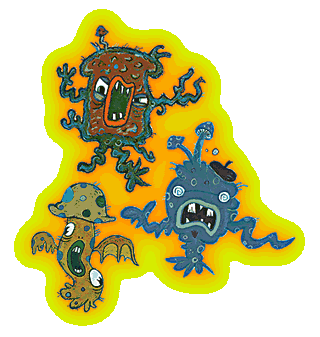
In these days of dietary paranoia, everyone knows that food kills. But there's a lot more to food-related fatalities than humdrum heart attacks and boring colon cancer. All-out catastrophes have plagued the food industry ever since people stopped growing their own. Here are a few favorites.
Tripping on fungus. For sheer psychedelic color, nothing tops the "dosing" of the little French village of Pont-Saint-Esprit in 1951. A rare hallucinogenic ergot fungus contaminated the local rye crop that year. The resulting baguettes merely sickened most of them, but several hundred unsuspecting villagers got sent on trips worthy of Woodstock's brown acid. The streets filled with hallucinating peasants. Some jumped out of windows. Others flung themselves into the Rouen River. In the confusion, seven people were killed and dozens more injured. For survivors, consensus reality was never quite the same.
Swimming in beer. Far more enjoyable for the victims was the London Beer Flood of 1814. A burst brewery vat inundated a Soho neighborhood with 2,400 barrels of "strong beer." Sure, at least eight people died, mostly crushed or drowned. But the survivors had all the beer they could drink. (There was at least one fatality due to alcohol poisoning.) Further chaos ensued at the local hospital, where the aroma of beer from soaked survivors quickly filled the building. Other patients, convinced beer was being served, rose from the beds and rioted for their pints.
Buried by goo. Both those incidents pale next to the Great Boston Molasses Flood of 1919. A tank holding some 2.3 million gallons of the sticky stuff ruptured one January day. Belying a common figure of speech, the 20-foot-high brown wave hurtled though the streets at an estimated 35 mph. Some buildings were crushed to kindling; others bobbed like corks on the sticky tide. No fewer than 21 people drowned (or is it suffocated?). The aftermath was "the biggest mess since the Augean Stables." Boston Harbor was brown for weeks. And many survivors could never stomach a molasses cookie again.
Is what I just read true?
Yes | No
John Marr is the publisher of Murder Can Be Fun.
